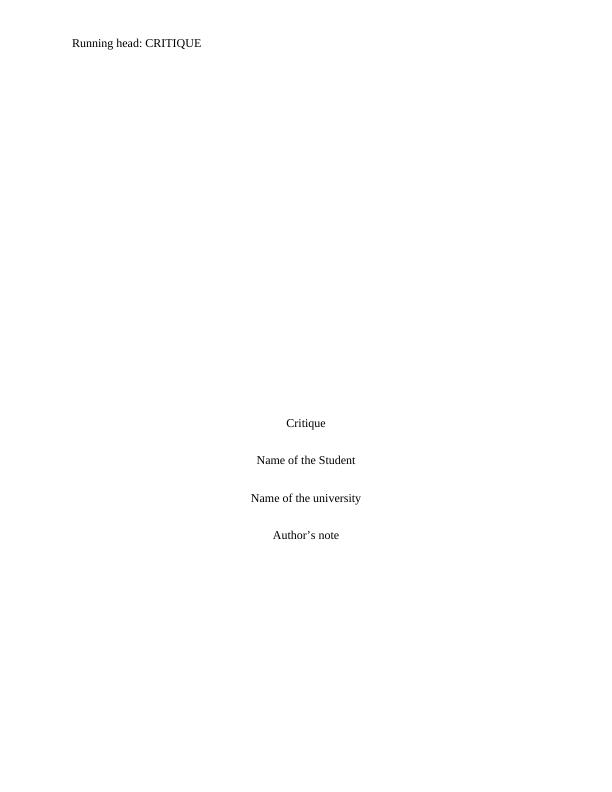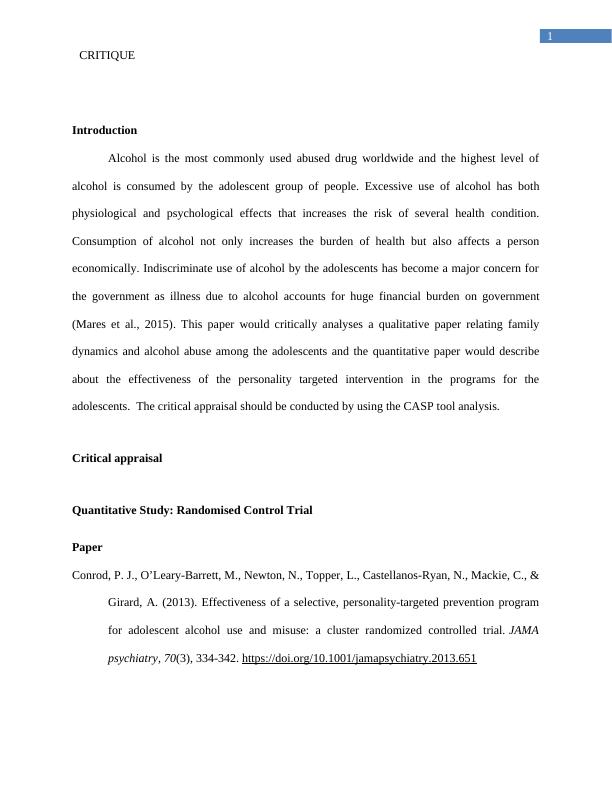Critique of a Qualitative and Quantitative Study on Adolescent Alcohol Use
This assignment is for the course HLSC641 Introduction to Health Sciences Research. It is a general literature review that requires a critical review of research articles related to health sciences. The assignment is to be submitted in the form of a written report. No due date or referencing style is specified.
17 Pages4257 Words254 Views
Added on 2023-06-10
About This Document
This paper critiques a qualitative and quantitative study on adolescent alcohol use. The studies analyze the role of family dynamics and personality-targeted interventions in preventing adolescent alcohol use. The qualitative study explores the attitudes of parents towards adolescent drinking and the role of family dynamics in shaping adolescent behavior. The quantitative study evaluates the effectiveness of a selective, personality-targeted prevention program for adolescent alcohol use and misuse. The paper provides valuable insights for policymakers and healthcare professionals in developing effective interventions to address adolescent alcohol use.
Critique of a Qualitative and Quantitative Study on Adolescent Alcohol Use
This assignment is for the course HLSC641 Introduction to Health Sciences Research. It is a general literature review that requires a critical review of research articles related to health sciences. The assignment is to be submitted in the form of a written report. No due date or referencing style is specified.
Added on 2023-06-10
ShareRelated Documents
End of preview
Want to access all the pages? Upload your documents or become a member.
Substance Abuse Intervention for Family and Children
|20
|5370
|25
Health Behavioral Response
|3
|583
|172




